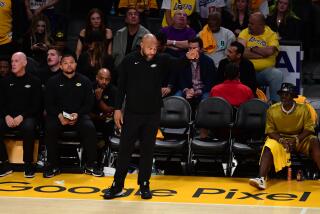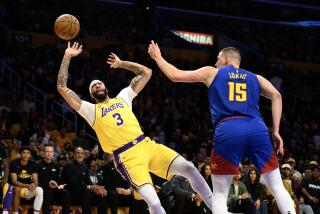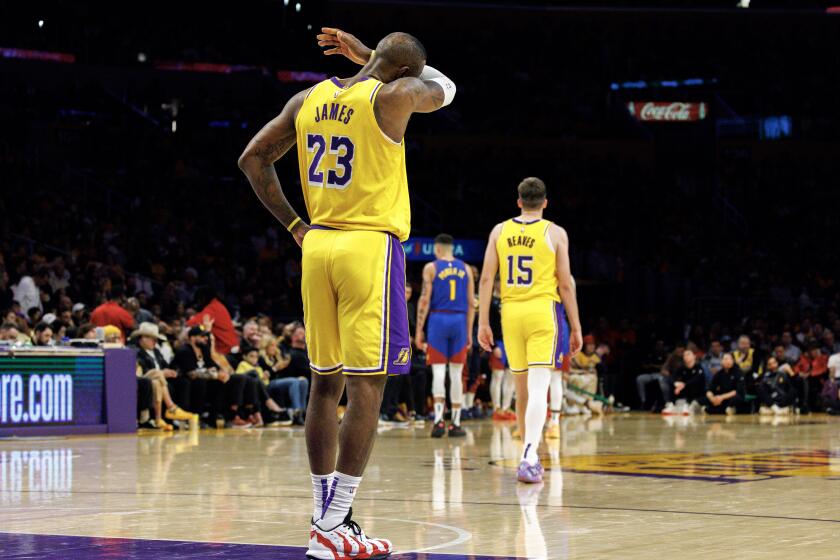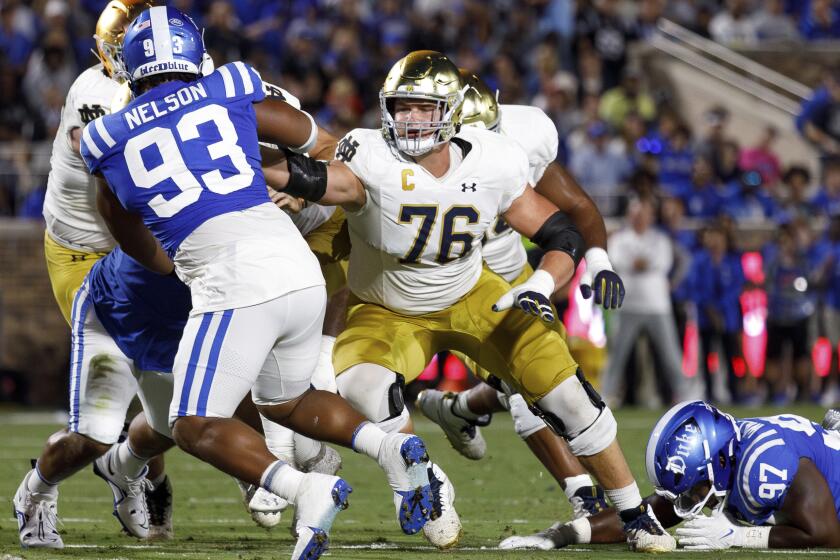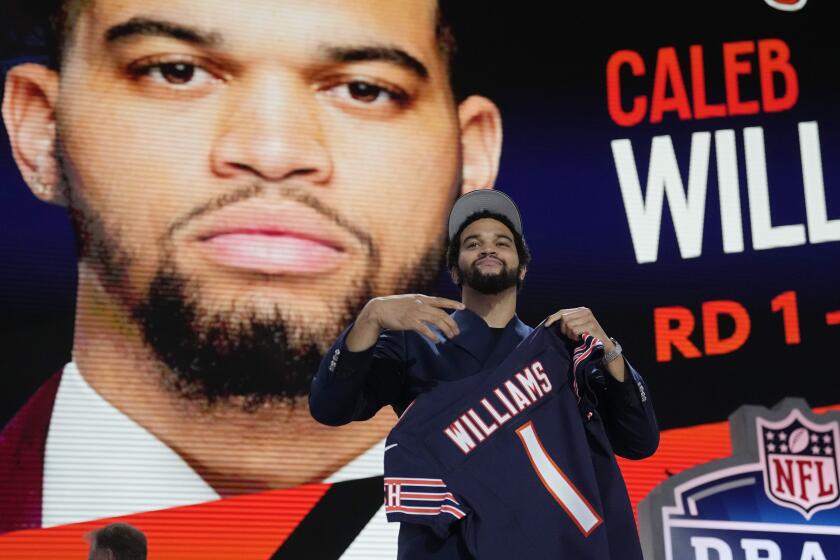Veteran Jockey Shrugs Off His Injuries, Aims for 8,000 Victories
Some might say that Laffit Pincay, the second winningest U.S. jockey of all time, was destined to wear racing silks.
Guess who does not share those feelings.
“I was born to be something else. I would have liked to be a boxer. But then again, maybe that wouldn’t have been so good. I probably would have been beaten up and I’d be walking the streets talking to myself,” Pincay said, laughing.
Those remarks must be taken with a grain of salt. They came after yet another injury at the racetrack and while talking about his constant struggle to make weight for his mounts. Those were aching bones talking.
The latest mishap for the Panamanian-born jockey, who lives in Glendale, occurred April 4 in the first race of the day at Santa Anita. His mount, a filly named La Fresa, fell and Pincay landed hard on his left shoulder. The horse was OK but Pincay was not.
“As soon as I got up, I felt a pinch,” he said. “I knew if it wasn’t broken, there was something wrong.”
Pincay knew because he has been there before. The spill caused Pincay the 11th broken collarbone of his 28-year career.
Here is a jockey who, had it not been for a rubberized rail cover at Del Mar, might have been killed in a spill there in August, 1988. Instead, he suffered seven broken ribs and a punctured lung, and was sidelined for almost two months.
Here is a jockey who, the year before, had fractured a vertebra at Santa Anita after another rude ejection from the saddle. That one kept him out five weeks.
And here is a jockey who, in early 1990, broke a collarbone while driving a sulky in a charity harness race at Los Alamitos. Another collarbone fracture followed at Hollywood Park last fall.
But the pain from all of those accidents pales in comparison to how Pincay felt in January, 1985, when a phone call told him his wife, Linda, had killed herself with a gunshot at the home they then owned in the Los Feliz area. That blow almost ended his career.
For months, Pincay blamed himself for Linda’s death. Pincay knew she had a history of suicide attempts, but he still felt guilty.
“I thought I should have seen it coming,” he said. “But there was really nothing I could do.”
Pincay, however, held together for the sake of their two children.
“It’s one of those things you think can only happen to other people, but not to you,” Pincay said. “It was the toughest time of my life. I went back to riding then as a type of therapy, to keep busy.
“Physical injuries don’t affect me mentally that much. I can work through them or take something for it. But there’s nothing you can take for emotional pains. Only time has taken care of those wounds.”
Time has also turned Pincay into the most successful jockey ever after Bill Shoemaker, who retired two years ago with 8,883 victories and who is a quadriplegic after an automobile accident last year. Shoemaker now trains horses.
Pincay has more than 7,700 victories and his mounts have won more than $150 million. The Hall of Fame jockey won the Kentucky Derby once and the Belmont Stakes three times. He owns five Eclipse Awards as jockey of the year and has taken 34 California championships as the leading rider at Del Mar, Hollywood Park or Santa Anita.
If Pincay were a ballplayer, collectors would pay a chunky premium for his trading card. Wheaties would put his face on cereal boxes. There would be an Air Pincay riding boot or something.
Yet, Pincay basically remains unknown to the American public, except those who frequent racetracks. But those in the sport know the Pincay legend well.
“If communication between horse and rider does really exist, Pincay has it more than anyone else,” jockey Chris McCarron once said. “He’s so strong. But he also has finesse, and his rhythm in stride is better than any jockey I’ve ever seen.”
A very small part of the racing world first caught a glance of Pincay in May, 1964. Then a 17-year-old rookie jockey with big aspirations, Pincay rode a horse named Huelen at the Presidente Remon Racetrack in Panama City for his first victory as a professional and all of $64 in take-home pay. He quickly became the country’s top rider, making as much as $1,000 a week.
By 1966, Pincay was riding in the United States. He began competing at California tracks two years later. He won his first major California title at Hollywood Park in 1968.
Now 45, Pincay hopes to stick around long enough to reach another milestone. “My goal is to win 8,000 races,” Pincay said. “That should be in about a year or two. I’ll see when I get there if I feel like continuing a little longer.”
But age is beginning to make it more difficult for Pincay to rebound as easily from injuries, and the dieting can be a drag. He keeps his weight at 115 pounds by eating well-balanced, low-calorie meals, made up mostly of chicken, fish, cereals and sometimes rice--all measured by the ounce.
“It’s getting tougher to ride again after the injuries,” said Pincay. “I’ve always come back and ridden well after bad falls. For me, it’s a challenge.”
More to Read
Get our high school sports newsletter
Prep Rally is devoted to the SoCal high school sports experience, bringing you scores, stories and a behind-the-scenes look at what makes prep sports so popular.
You may occasionally receive promotional content from the Los Angeles Times.
